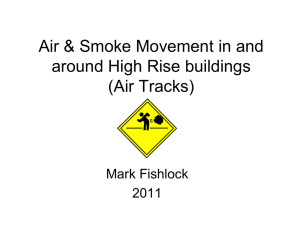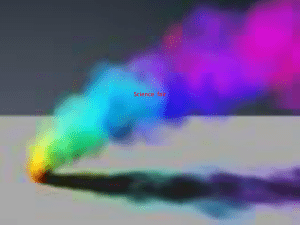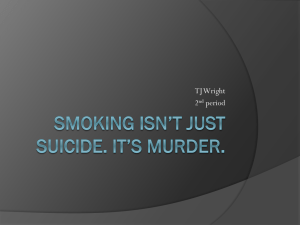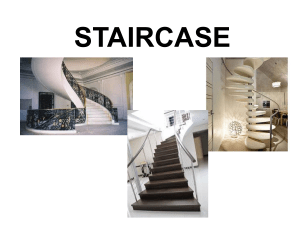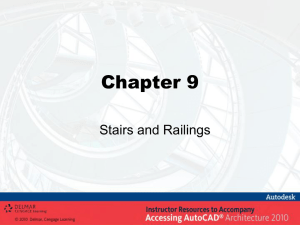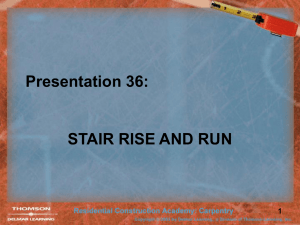Stair - HubSpot
advertisement
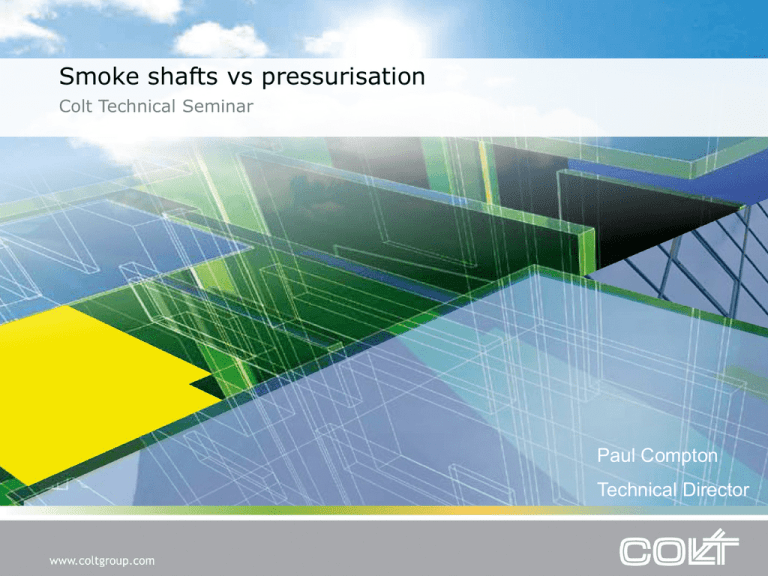
Smoke shafts vs pressurisation Colt Technical Seminar Paul Compton Technical Director A brief history of Colt Private Company founded in 1931 I J O’Hea OBE (1897 - 1984) 2013 Group Turnover £152 million Manufactures in the Brazil, China, the Netherlands, Saudi Arabia, the UK and the USA “I J O’Hea. Colt Founder” Current UK Business markets Smoke Control Environmental Comfort Control Natural Ventilation Louvre Solar Shading Smoke shafts vs pressurisation Smoke shafts vs pressurisation Covering: 1. What do these systems do? 2. Legal basis and standards: 3. Relative benefits, performance, space and cost 4. Compensation for non-compliant layouts - Extended Travel Distances etc 5. Which system should I choose? What do these systems do? • Protect stairs from smoke ingress • to aid safe evacuation • to aid safe fire fighting access • Reduce smoke ingress to lobbies or corridors adjoining stairs • Reduce risk of smoke spread via lifts • Protect fire fighting or evacuation lifts from smoke ingress Design basis is always a single fire, not located in the stair, lobby or lift. Legislation and standards Legislation In the UK the relevant legislation is Building Regulations and their associated guidance documents (Approved Document B in England and Wales and its equivalents in Scotland and Ireland). In ADB: Smoke control is recommended, directly or by reference to BS 5588 in: - Residential escape stairs - All fire fighting stairs - AOV, natural shafts and pressure differential systems are largely treated as equivalents - mechanical shafts are not discussed (too new) - pressurisation can also be added to avoid discounting a stair or adding lobbies in commercial buildings Legislation and standards Standards In the UK we have: BS 5588 (withdrawn) BS 9991 BS 9999 BS 9991 and BS 9999 recommend a pressure differential system if a building has a floor more than 30m above ground level. BS EN 12101-6 is the design standard for pressure differential systems Legislation and standards BS EN 12101-6 Sets requirements for 6 different classes of system. Only 2 are commonly used: A & B. Closed Door Requirements Open Door Requirement Class Stair (Pa) Lift Shaft (Pa) Lobby (Pa) Velocity (m/s) A 50 50* 45* 0.75 B 50 50 45 2.0 * = If pressurised Open Doors Stair door on fire floor Stair door on fire floor Stair door on floor below Lobby door on fire floor Lift door on floor below Final exit door Legislation and standards Do mechanical smoke shafts provide depressurisation to BS EN 12101-6? •The standard was not written with this in mind •50Pa? •0.75m/s? •100N? •Standby fans? •Conclusion: No, but it does match some requirements. Performance comparison Pressure relief damper FIRE FLOOR Accommodation air release ventilator 2 m/s average velocity Lift door open Smoke detector Stairs First floor Ground floor Performance comparison Mechanical smoke shaft Pressurisation Stair: Kept smoke free Stair: Kept smoke free Lobby: Likely to be smoky for limited periods Lobby: Kept smoke free if pressurised, otherwise likely to be smoky for limited periods Lifts: Usually protected from smoke entry by light depressurisation of lobby Lifts: Kept smoke free if lift or lobbies pressurised. Otherwise not specifically protected Space requirements (shafts) A mechanical shaft system needs a single shaft, typically 0.5m2 to 1m2 cross section. A pressurisation system needs: • • Lobbies A shaft for each area pressurised, typically 0.15m2 to 2.0m2 Accommodation air release (another shaft?) + + Stair Lobbies? Lift? Space requirements (roof) Design Pressurisation system design Data Input Sheet Project: Date: By: Class of system BASIC SCHEMATIC (flow rates include allowance for unknown leakage paths and duct leakage) B Areas to be pressurised: Stairs Dec-12 pc Pressure Stairs yes Lobbies yes Lift yes fan set 50 Pa 14.80 10.97 Number of doors to unpressurised spaces: Single inward opening Single outward opening Double Number of doors to pressurised lobby: Single inward opening Single outward opening Double Areas to unpressurised spaces External wall area Internal wall area Ceiling area floor area Area of 'open door' 0.55 pressure relief damper (m3/s) 8.44 grille to every third storey 10 868 m2 m2 15 m2 15 m2 quality quality quality stair 1.6 m2 m2 Pressure 50 Pa Number of openings to unpressurised spaces: grille to each lobby tight average tight (This only applies for systems to BS 5588-4) Lifts 3.28 lift lobbies Difficulties and issues – smoke shafts • Excess depressurisation • Large doors • Basement stair air inlet Fire Fighting Lobby negative Staircase Difficulties and issues – pressurisation • Large doors • Quality of building construction • Accommodation Air Release Costs You get what you pay for. Pressurisation can provide the best protection but is the most expensive. A mechanical shaft is next best and next most expensive. A natural shaft is less expensive (but takes up more valuable space). AOV are low cost but provide the least good protection. Non-ADB compliant buildings Extended travel distances in residential buildings Non-ADB compliant buildings Refurbishment / change of use It’s not uncommon for older buildings to be unable to comply with current layout requirements (number of stairs, lobbies, etc). • • Pressurisation? Alternatives? Which system do I choose? There’s no hard and fast answer, but this table might help guide you. Taller than 30m? If following BS 9991 or BS 9999, pressurisation is recommended. Space is tight? A mechanical shaft system is normally most space efficient (if AOVs not suitable). Budget is tight? Natural ventilation is the low cost option if practical. To avoid lobbies or discounting a stair Pressurisation. For extended travel distances An enhanced mechanical shaft system is essential. The End Any Questions?
